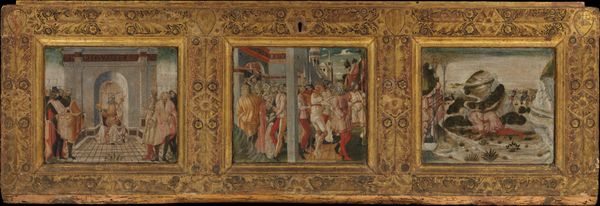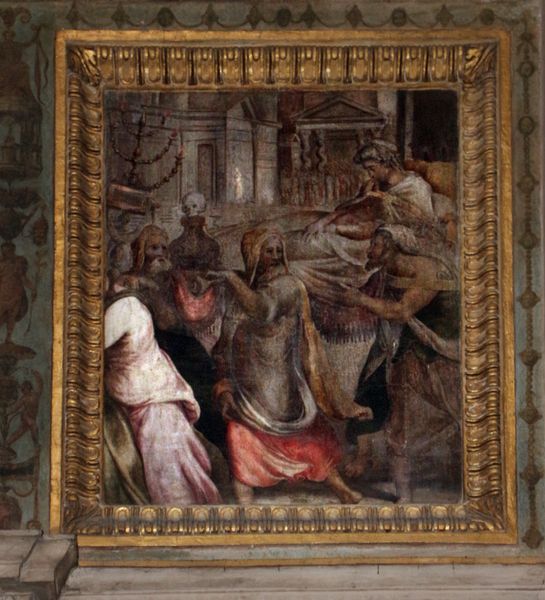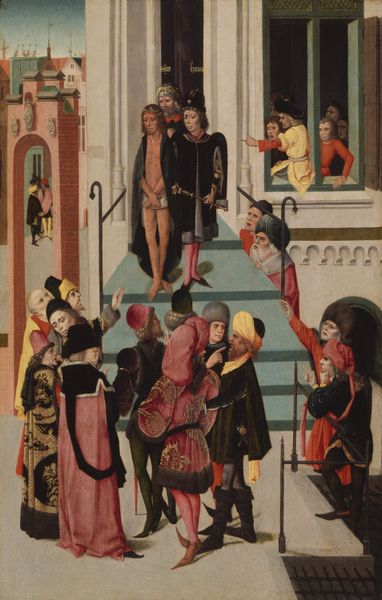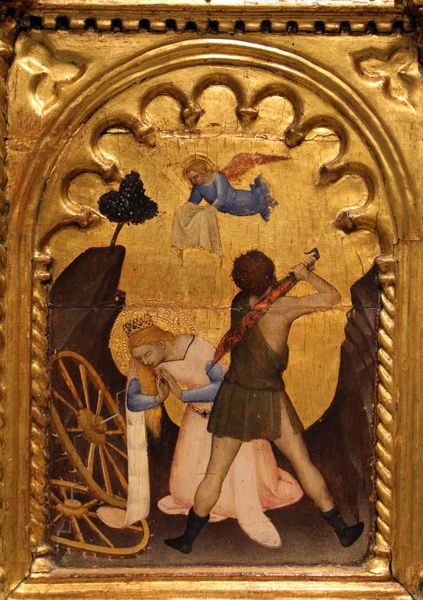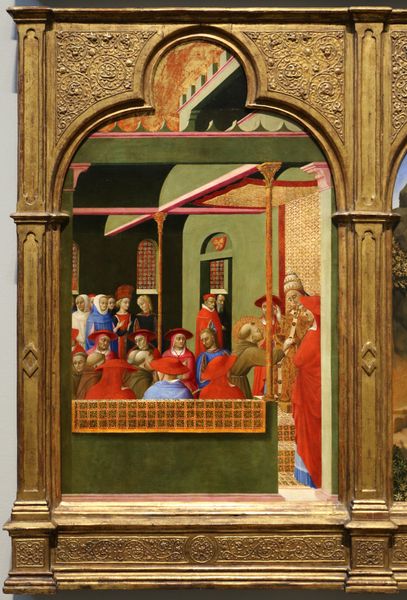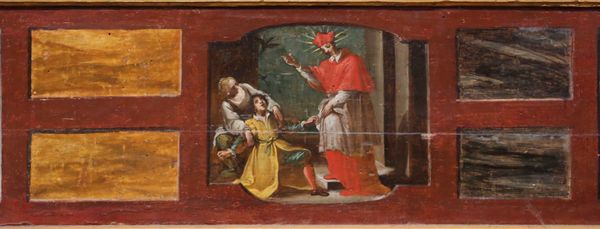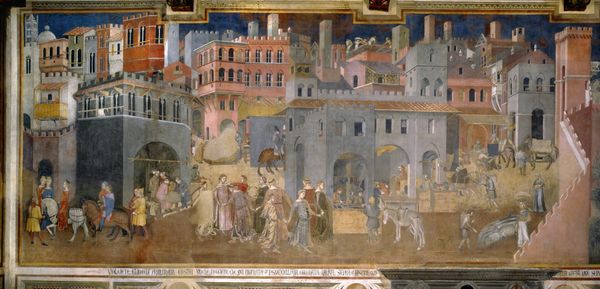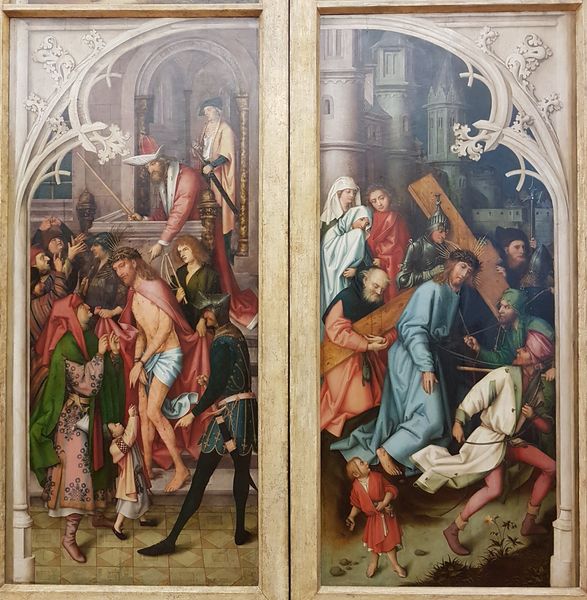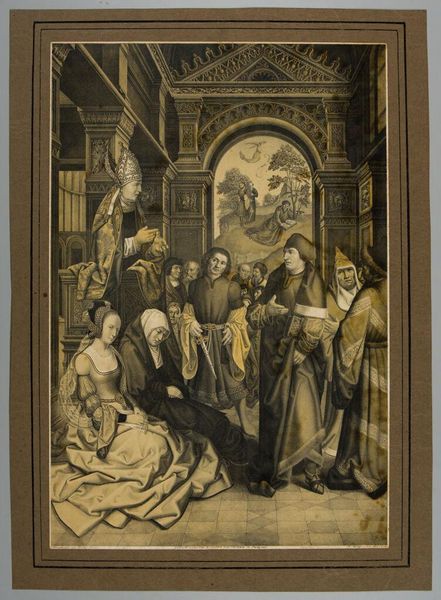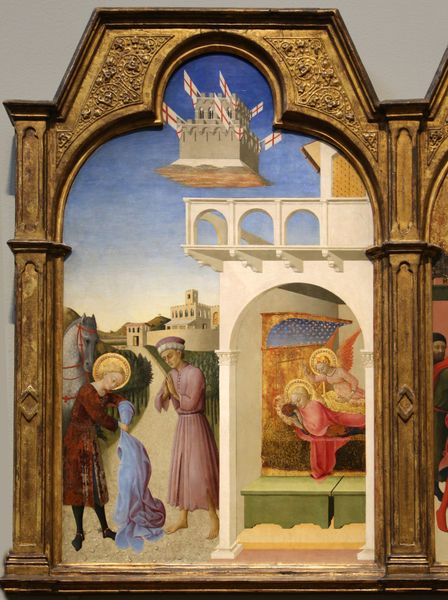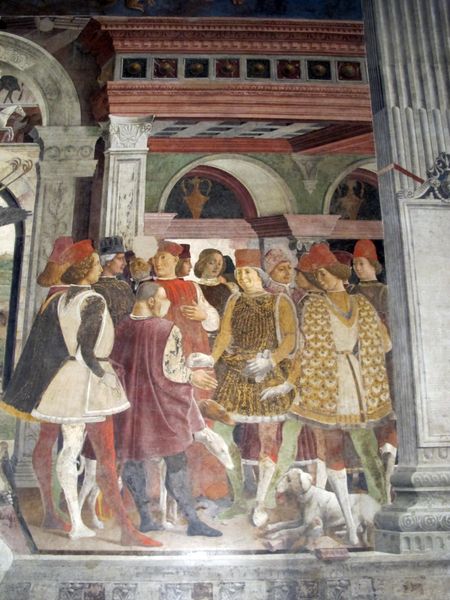
tempera, painting
#
portrait
#
gouache
#
water colours
#
narrative-art
#
tempera
#
painting
#
11_renaissance
#
traditional architecture
#
handmade artwork painting
#
underpainting
#
history-painting
#
italian-renaissance
Copyright: Public domain
Curator: The "Tabernacolo Di S. Sebastiano" by Francesco Botticini, painted around 1480, is a remarkable piece of the Italian Renaissance using tempera. It depicts, in different scenes, a complex narrative surrounding Saint Sebastian, which begs examination. Editor: It's striking! My immediate reaction is a visceral one. The scenes, encased in this ornamented frame, seem incredibly crowded, a stark contrast between the opulence of wealth and the brutal realities being depicted, with clear intentional underpainting, gouache and watercolor finishes. Curator: Exactly. Consider the positioning of Sebastian; his body becomes a site of power and resistance. Renaissance paintings of this type served to naturalize hierarchies related to state power but simultaneously reveal underlying tensions through martyrdom, inviting both reverence and contemplation on themes of injustice and human agency. The execution, quite literally in this case, feels deliberately public, doesn't it? It speaks to control but also perhaps fragility of control, as popular opinion in religious matters was so relevant for the maintenance of social structure. Editor: The actual application of tempera interests me in this work. Think of the cost involved in creating the paints from raw materials at the time, juxtaposed against how Botticini used readily accessible underpainting techniques with simple gouache washes for finer details to achieve a rich yet economic result! These constraints reveal something deeper about his method; was this a pragmatic artistic choice, or was it also a visual representation about wealth? It's such clever staging! Curator: And if we consider Botticini's potential audiences, likely part of Florentine elite or connected to religious orders, these scenes were a didactic tool. Saint Sebastian was seen both as a symbol of resilience during plague outbreaks and of adherence to Christian values. Viewing that within a broader discourse, the intersectional experiences in times of immense health-related crisis shows how faith was seen as the intersection point to resilience and justice. Editor: The scenes aren't static, are they? From left to right we can clearly see how architecture impacts behavior within the scenes: one of my first thoughts was "are we seeing architecture in the round?", with so much complexity given to details within this tabernacle's creation—a monument in service, but a creation through labor-intensive, human action. It must have taken an entire workshop! Curator: In closing, the "Tabernacolo" reflects the artistic, socio-economic and political conditions surrounding its making—inviting discourse of what art in this style communicates about Renaissance identity, power and devotion. Editor: Agreed. The interplay of accessible material production and complex storytelling leaves us thinking about our relationship to history and art, and that says something powerful!
Comments
No comments
Be the first to comment and join the conversation on the ultimate creative platform.


